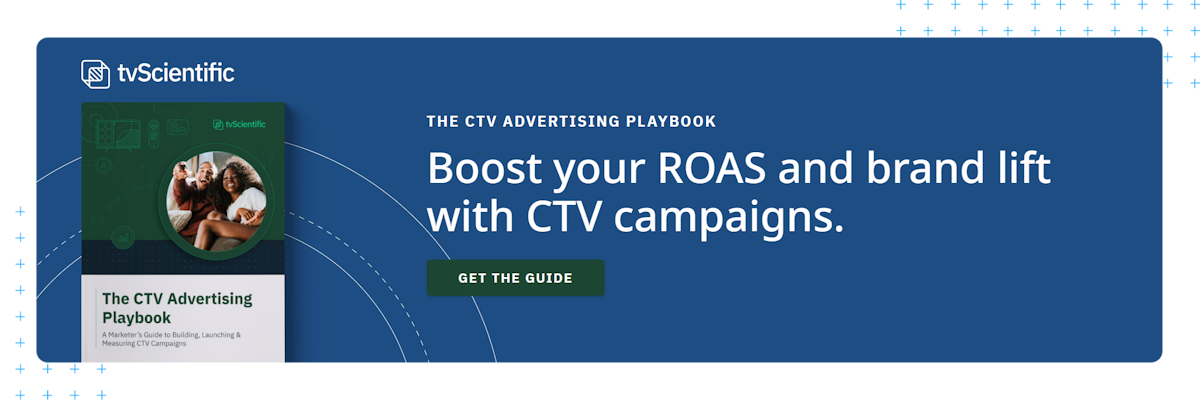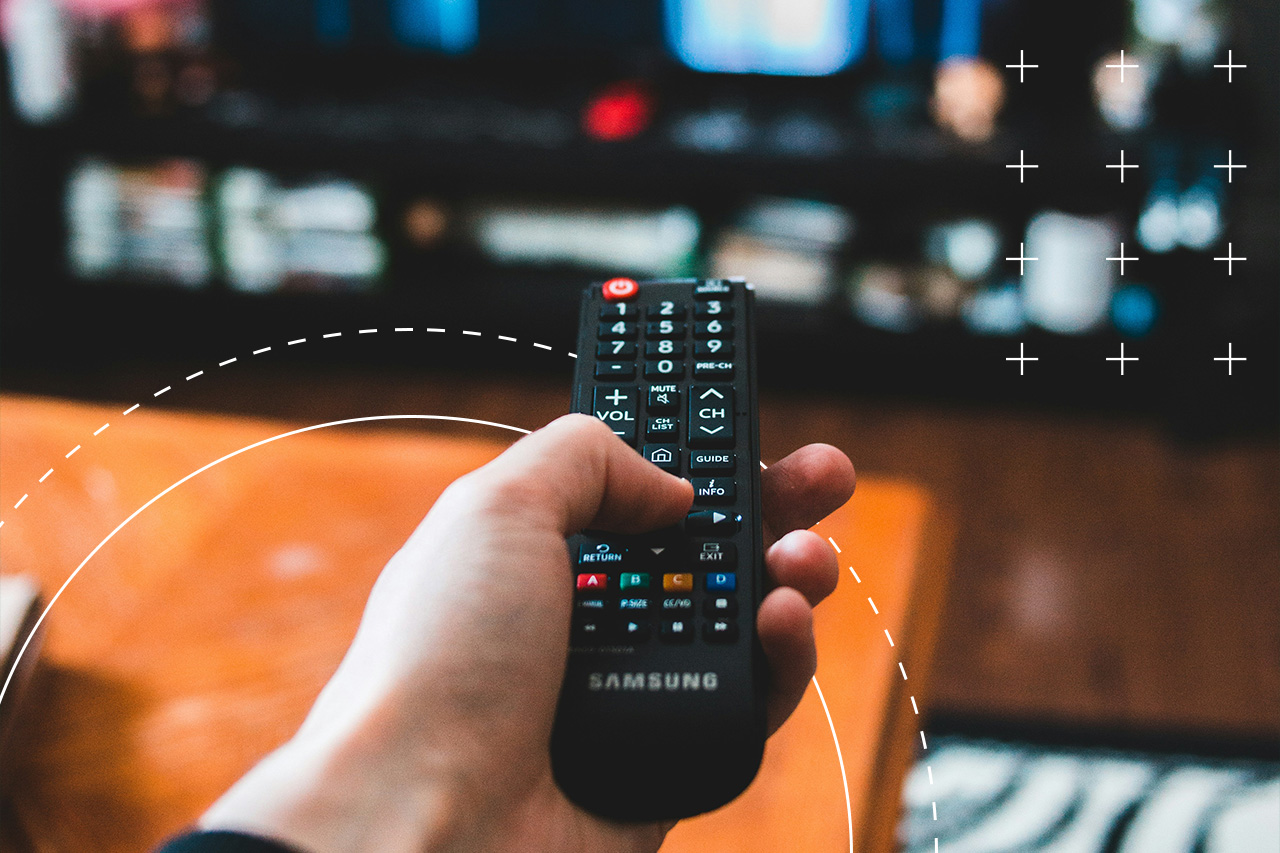Discover the pros and cons of TV advertising and digital advertising and why connected TV (CTV) advertising offers the perfect blend of both worlds.
As the advertising industry continues to develop at a rapid pace, businesses will continue to find themselves at a crossroads when deciding how to allocate their advertising budgets: TV, digital, both, neither? Digital advertising and traditional television advertising are historically strong channels for reaching target audiences, each with its unique advantages and disadvantages.
However, a rising star in the advertising industry that combines the best of both worlds is capturing the attention of marketing campaign leaders: Connected TV (CTV) advertising. Let’s look at some of the key differences between traditional advertising on TV and digital marketing and advertising avenues, and then review why CTV may be the ideal, marketing budget-friendly solution for your advertising needs.
The Pros and Cons of Television Advertising
Businesses interested in expanding their marketing strategies to include TV ads must be aware of the full range of promises and challenges the advertising medium can present.
From massive reach and heightened emotional impact to considerations for cost and evolving viewer habits, understanding the intricacies of TV advertising is essential for crafting an advertising strategy that aligns with your brand awareness and conversion goals.
Pros
For decades, television ads have been a dominant force for organizations ranging from multinational companies to local, small businesses. These benefits are why TV has stayed near the top of the advertising platform food chain.
Broad Reach
Television's influence spans across demographics and geographies, offering a powerful platform for brands to reach a vast and diverse audience. Advertisers can handpick channels, time slots, and programs, allowing them to tailor their messages with precision. Whether aiming for a national spotlight or a hyper-local focus, TV's reach ensures that brands can fine-tune their approach to maximize viewership and exposure while connecting with their ideal customers on a large scale.
Impactful Storytelling
TV advertising transcends mere product promotion thanks to the power of visual and audio aspects that help tell a captivating story. With this dynamic narrative canvas, brands can create compelling content that resonates with viewers on a human level. This immersive approach helps brands communicate features while sparking emotions to forge a lasting and meaningful connection with the audience. In the cutthroat battle for consumer attention, the ability to tell an engaging story sets TV ads apart.
Trust and Credibility
Many viewers trust TV commercials and consider them to be more credible than digital ads they see on social media and elsewhere. This trust is a valuable asset for brands seeking to go beyond online advertising methods to establish authority and reliability in the market. By relying on the credibility associated with television adverts, brands can capture attention while building trust with their audience to foster a positive, lasting brand perception.
Cons
As historically powerful as TV advertising is, this form of advertising also comes with some drawbacks that are important to consider.
High Costs
Producing and airing TV commercials calls for a significant investment and is often too expensive for smaller businesses with limited TV ad spends. Expenses related to good production quality, prime-time advertising slots, and pricey airtime expenses contribute to the high costs associated with television advertising. Despite its undeniable impact, the financial barrier can make producing and airing video ads for TV a less accessible option for businesses working to minimize their ad spend while maximizing return on investment.
Limited Targeting
While television boasts broad reach, its targeting capabilities lack the precision that digital media and online marketing specialize in. TV’s one-size-fits-all approach often leads to wasted impressions and constant retargeting efforts, as ads reach viewers outside the intended target audience. Unlike digital channels and apps that allow granular targeting based on demographics, interests, and behaviors, video content on TV struggles to deliver tailored messages, potentially diluting the impact of the campaign.
Difficulty in Measuring Return on Investment
Measuring the effectiveness of TV campaigns can be challenging, with delayed and less precise metrics compared to digital advertising. Traditional media like TV make real-time tracking and attribution difficult, and the reliance on methods like surveys or post-campaign analysis introduces a lag in gaining valuable insights. This inherent difficulty in gauging immediate ROI can hinder businesses seeking more agile and data-driven advertising strategies.
The Pros and Cons of Digital Advertising
Digital advertising strategies are a relatively new kid on the block for marketing teams, in comparison to TV. Taking advantage of search engine optimization (SEO), digital content marketing, email marketing, and constructing a robust social media presence on platforms like LinkedIn is now just par for the course.
Businesses must now also leverage the precision of audience targeting and real-time metrics that digital advertising offers when designing a holistic marketing strategy. However, alongside its strengths come considerations like ad fatigue and an inherent lack of trust.
Pros
Digital advertising is transforming the advertising landscape in recent years. Its advantages include:
Precise Targeting
Digital advertising revolutionizes audience targeting by allowing businesses to pinpoint specific demographics, interests, and behaviors. This precision ensures that messages resonate with the right people at the right time, maximizing the impact of campaigns and improving overall efficiency. It doesn’t hurt that digital advertising reaches across platforms, from laptops and tablets to smartphones and wearables.
Cost-Effective
Digital ads present a cost-effective alternative to traditional TV commercials and can accommodate businesses of all sizes. The flexibility of budget allocation and the ability to adjust spending based on performance make digital advertising an accessible avenue for everyone from small businesses aiming for impactful and efficient marketing strategies to massive corporations trying to stay on anyone and everyone’s mind.
Real-Time Analytics
Digital advertising introduced a game-changing advantage by providing access to real-time data and analytics. Advertisers gain immediate insights into campaign performance, allowing for accurate ROI measurements and the agility to adjust instantly. This real-time feedback loop enhances the effectiveness of campaigns, optimizing results on the fly.
Cons
Even as it harnesses the substantial power of the internet, digital advertising has its own set of challenges:
Ad Fatigue
The digital landscape is saturated with advertisements across platforms, leading to ad fatigue among consumers. Bombarded by a constant onset of digital ads, users often develop an aversion and resort to ad-blocking tools. This trend diminishes digital campaign effectiveness as audiences actively seek ways to reduce or eliminate intrusive advertising from their user experience.
Limited Creativity
The constraints of digital formats can limit the creative potential of advertisements when compared to the visual and auditory richness of television. Designing impactful visuals and narratives within the confines of banner ads or social media posts poses a challenge, potentially reducing the ability to convey complex messages or engage audiences in immersive storytelling.
Lack of Trust
Online ads encounter skepticism from consumers, driven in part by concerns related to data privacy and ad fraud. The explosion of online scams and intrusive data practices is eroding trust in digital advertising, and establishing credibility can become a hurdle as advertisers grapple with addressing these concerns and convincing audiences of their message’s legitimacy.

Connected TV: The Best of Both Worlds
Connected TV (CTV) advertising is emerging as a game-changer in the advertising industry. CTV refers to television sets connected to the internet that allow viewers to access streaming services like Netflix, Hulu, Amazon Prime Video, etc. Here's how CTV combines the strengths of both TV and digital advertising:
Precise Targeting on the Big Screen
CTV seamlessly merges the expansive reach of television with the precision of digital advertising. Advertisers can leverage CTV to deliver highly targeted ads on the big screen, ensuring messages resonate with specific demographics, interests, and behaviors to elevate the impact of campaigns.
Interactive Content
CTV introduces a new dimension to viewer engagement with interactive content. Unlike traditional TV, CTV ads can actively engage viewers and provide on-screen CTA buttons, encouraging dynamic interactions that transcend passive viewership. This heightened engagement captivates audiences and leads to increasing conversion rates.
Data-Driven Insights
CTV provides advertisers with comprehensive, real-time data and analytics, mirroring the insights available in digital advertising. These metrics allow teams to take a data-driven approach to tracking campaign performance and enable advertisers to make swift and informed adjustments to optimize their strategies and maximize impact.
Cost-Effective
CTV advertising is emerging as a cost-effective alternative to traditional TV advertising with all the power of digital. The flexibility in budget allocation and the ability to create intensely targeted campaigns make for a more efficient use of resources. This accessibility makes CTV advertising a viable option for businesses of varying sizes.
Making the Choice
The choice between traditional television advertising, digital advertising, and Connected TV advertising ultimately depends on your specific business goals, target audience, and budget.
While TV advertising offers broad reach and trust, and digital advertising provides precision and cost-efficiency, Connected TV advertising offers a compelling middle ground. It combines the visual and auditory impact of TV with the data-driven, interactive capabilities of digital, making it a powerful tool for modern advertisers.
If you're looking for the best of both worlds, Connected TV advertising might be the right choice for your business.
Embrace the power of TV advertising, and elevate your marketing strategy to new heights with tvScientific.





